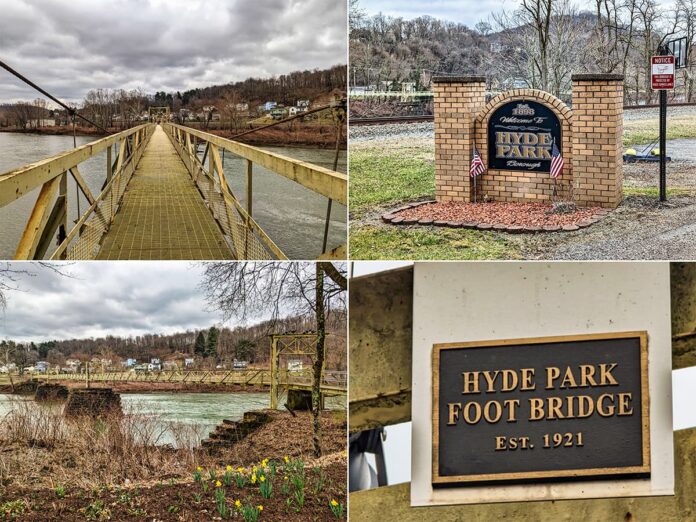
If you’re looking for information about the Hyde Park Walking Bridge in western PA, you’re in the right place!
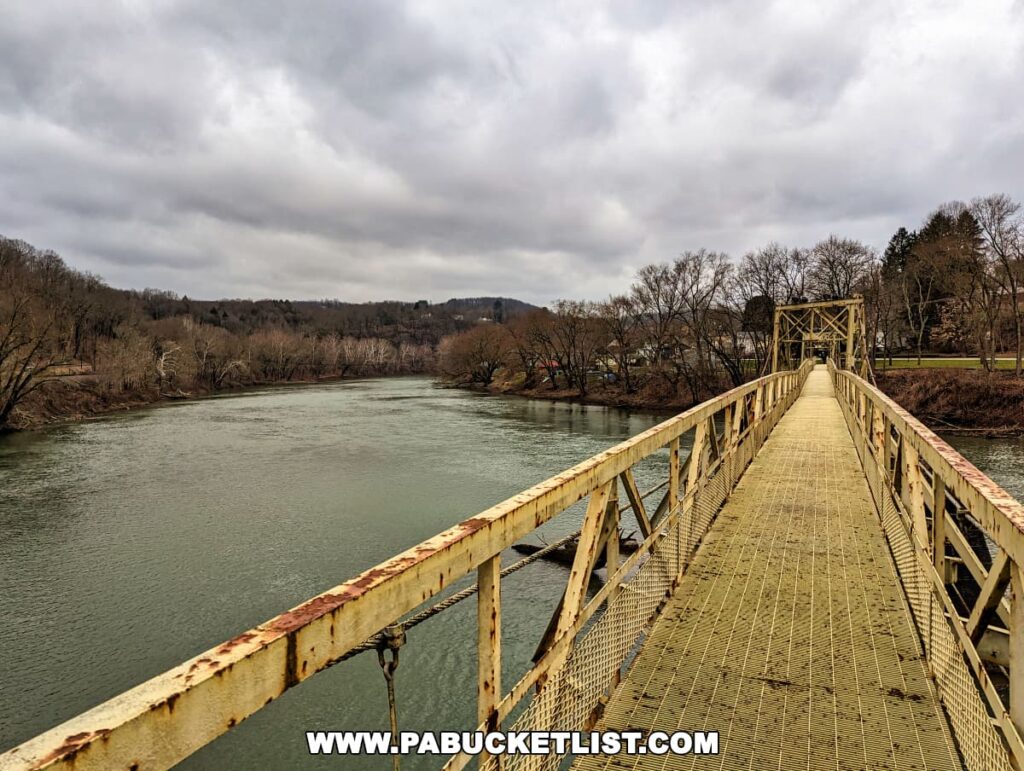
At 600 feet long and rising 20 feet above the Kiski River below, the Hyde Park Walking Bridge is the longest swinging bridge in Pennsylvania.
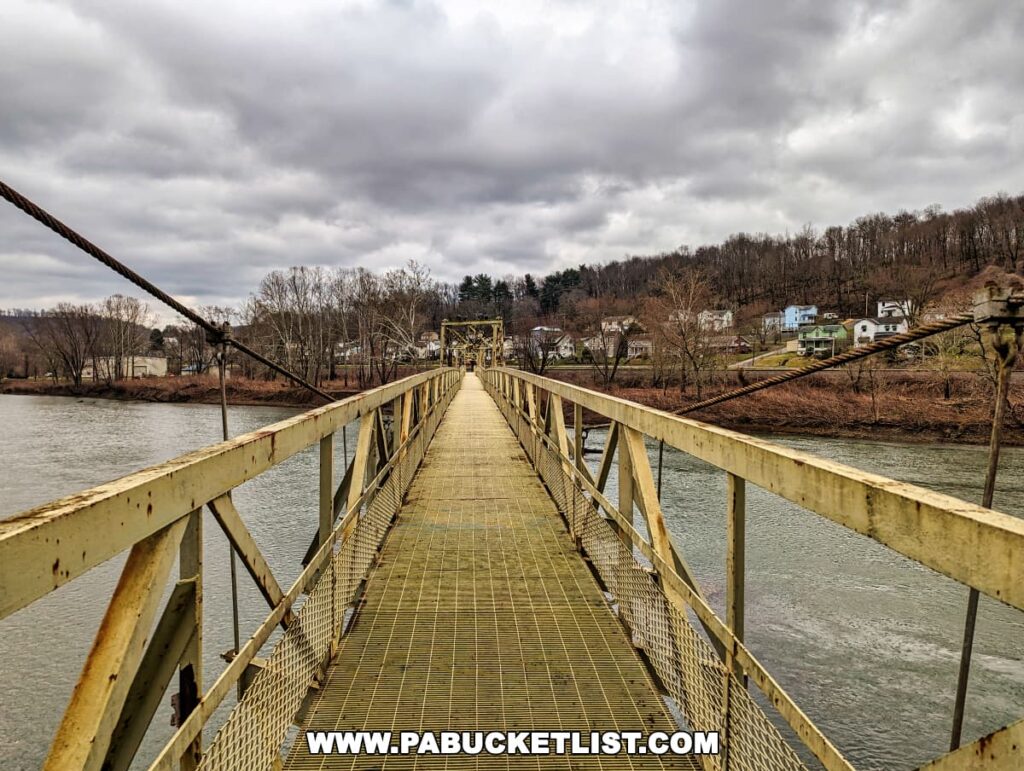
Built in 1921 and alternately known as the Hyde Park Foot Bridge or the Hyde Park Swinging Bridge, this impressive structure is a great spot to check out if you want to experience the thrill of crossing a bouncy suspension bridge over a wide river.
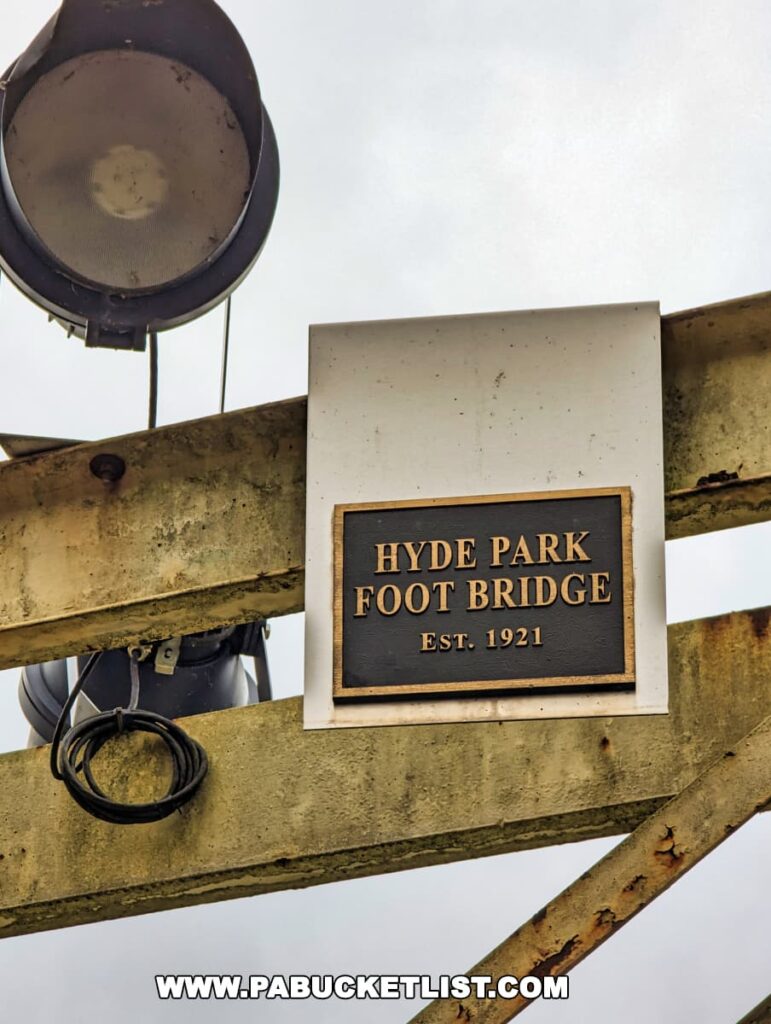
Directions to the Bridge
The bridge is most easily accessed from pull-off parking along Railroad Street, on the Hyde Park/Westmoreland County side of the bridge.
While this parking area is only a few yards from the bridge, you do have to cross an active set of railroad tracks to get to the bridge, so USE EXTREME CAUTION AND LOOK BOTH WAYS!

Fortunately it only a single set of tracks you have to cross, and you can see a long way in both directions.
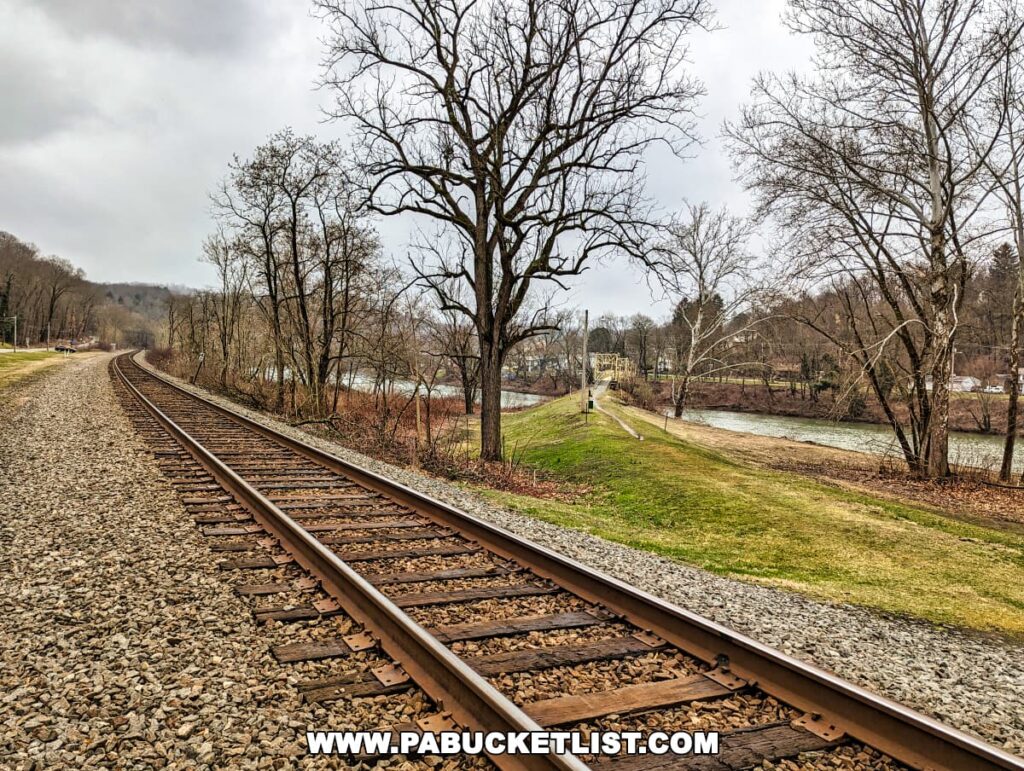
On the early spring day I visited the bridge, I saw two trains pass by in the span of a half-hour.
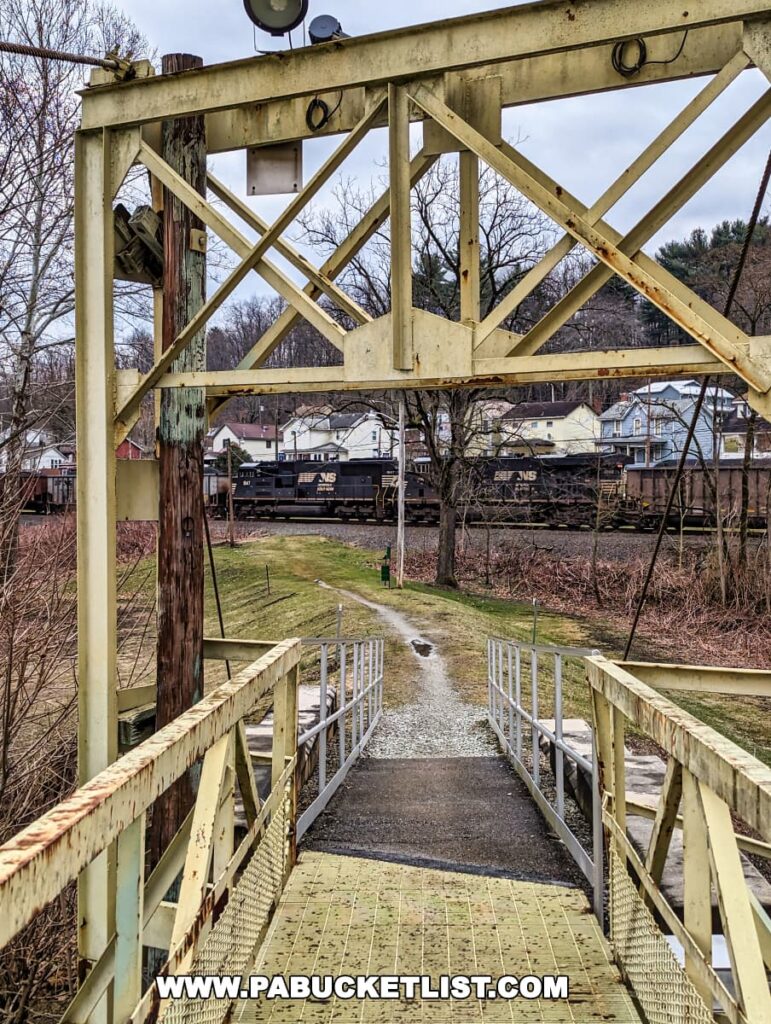
Despite the fact that the Armstrong County/Leechburg side of the bridge has a nice little parklet around it, there is no where to park a vehicle on that side.
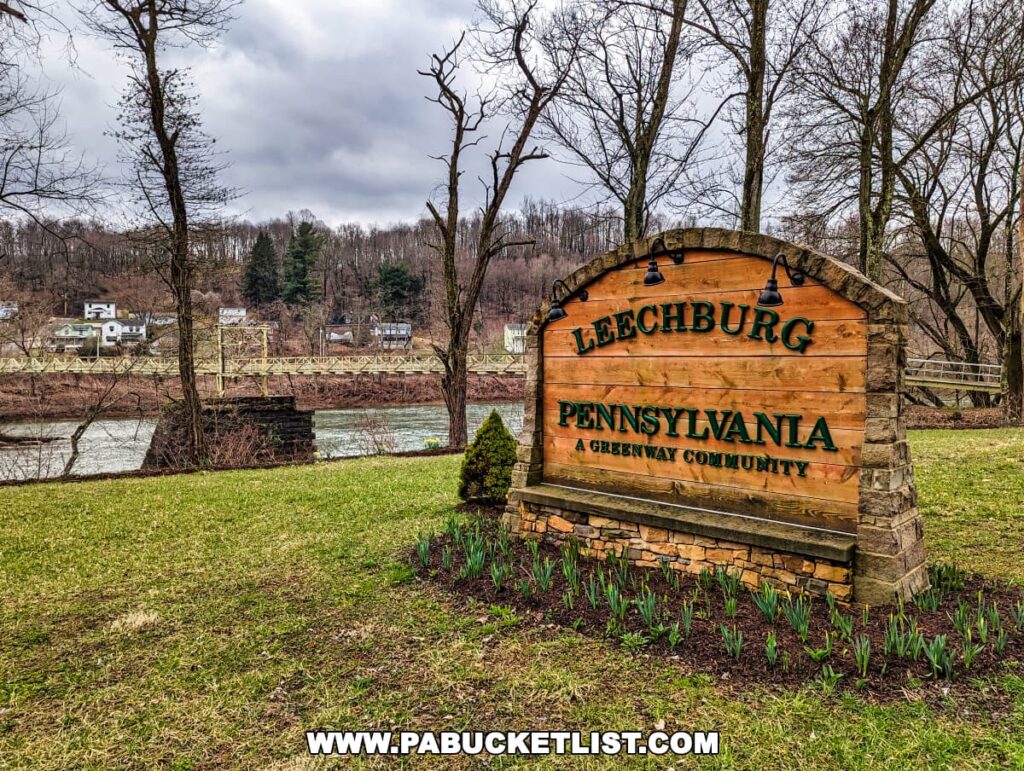
The Leechburg side parklet is worth visiting though, especially if you’re a history buff, as the Western Division of the Pennsylvania Canal once passed through there.
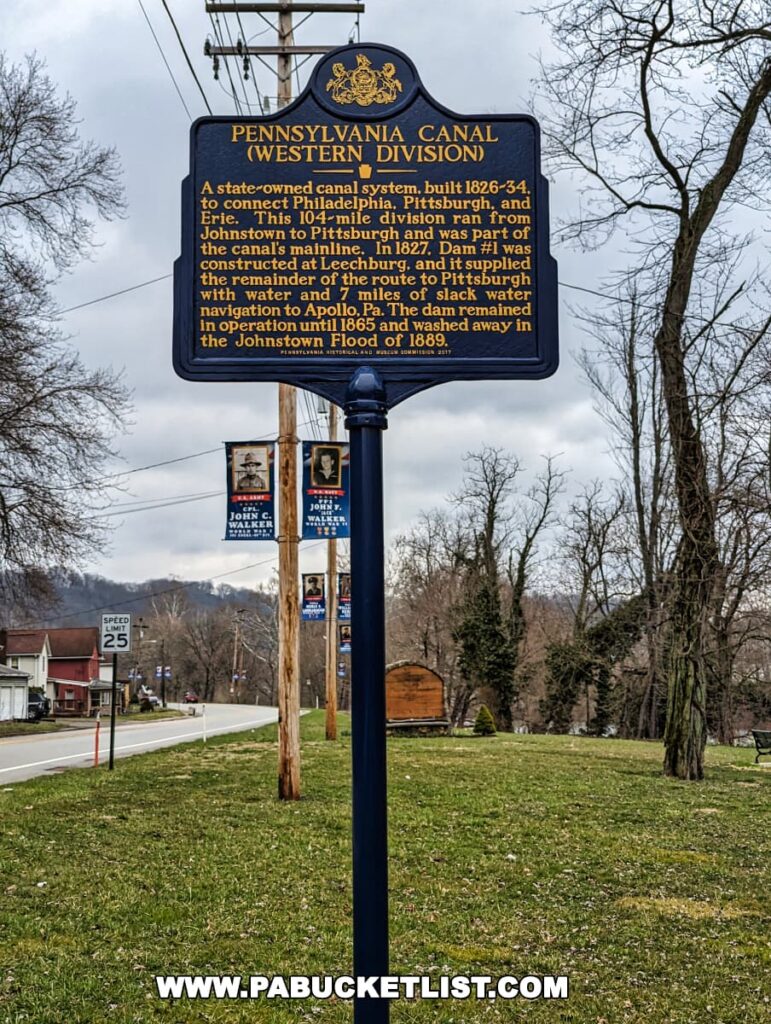
History of the Bridge
The bridge’s origins can be traced back to 1886, when a wooden bridge was constructed to carry trains across the Kiski River.
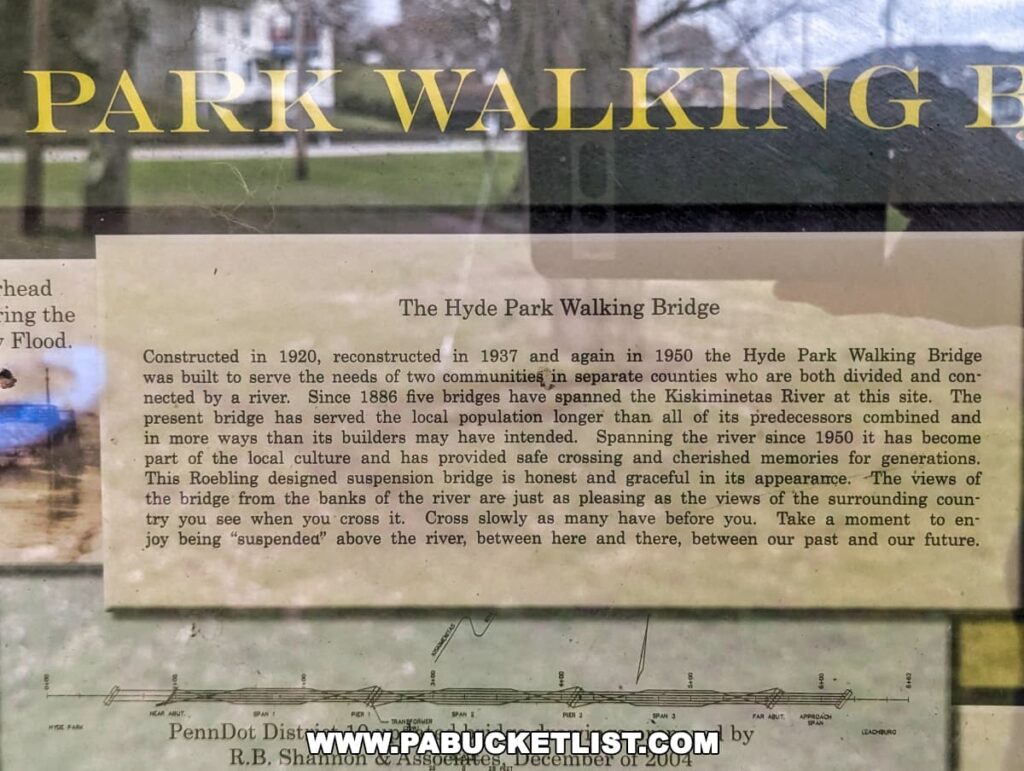
However, this bridge proved to be no match for the devastating floods that swept through the area in 1889.
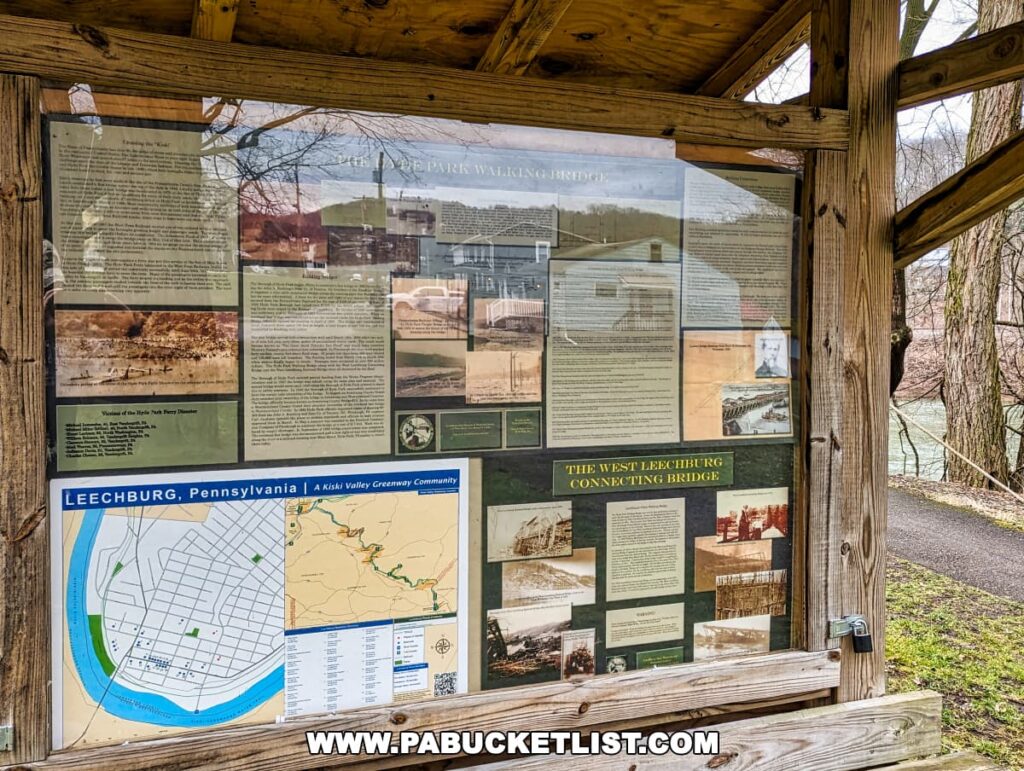
The floodwaters, which caused widespread destruction, including the infamous Johnstown Flood, swept away the wooden bridge, leaving behind only its stone piers.
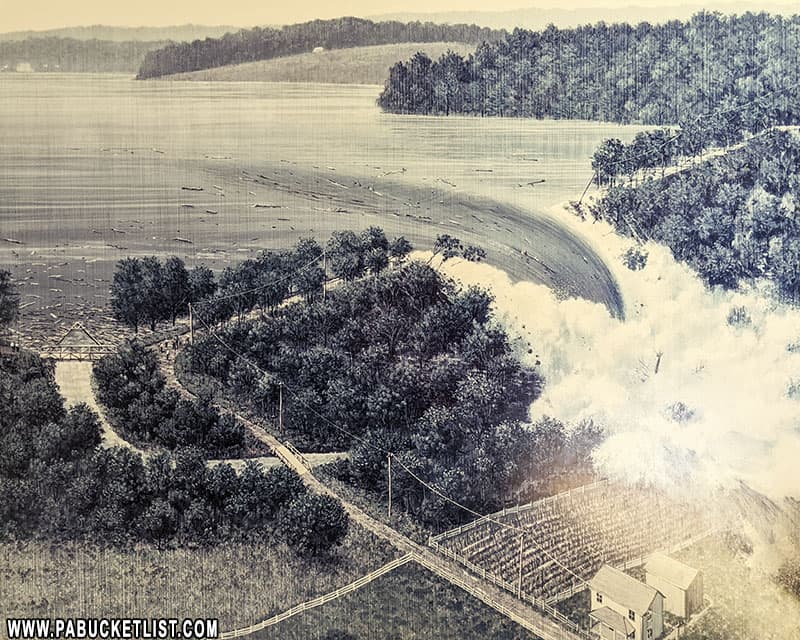
Undeterred by this setback, the communities of Hyde Park and Leechburg joined forces to rebuild the bridge.
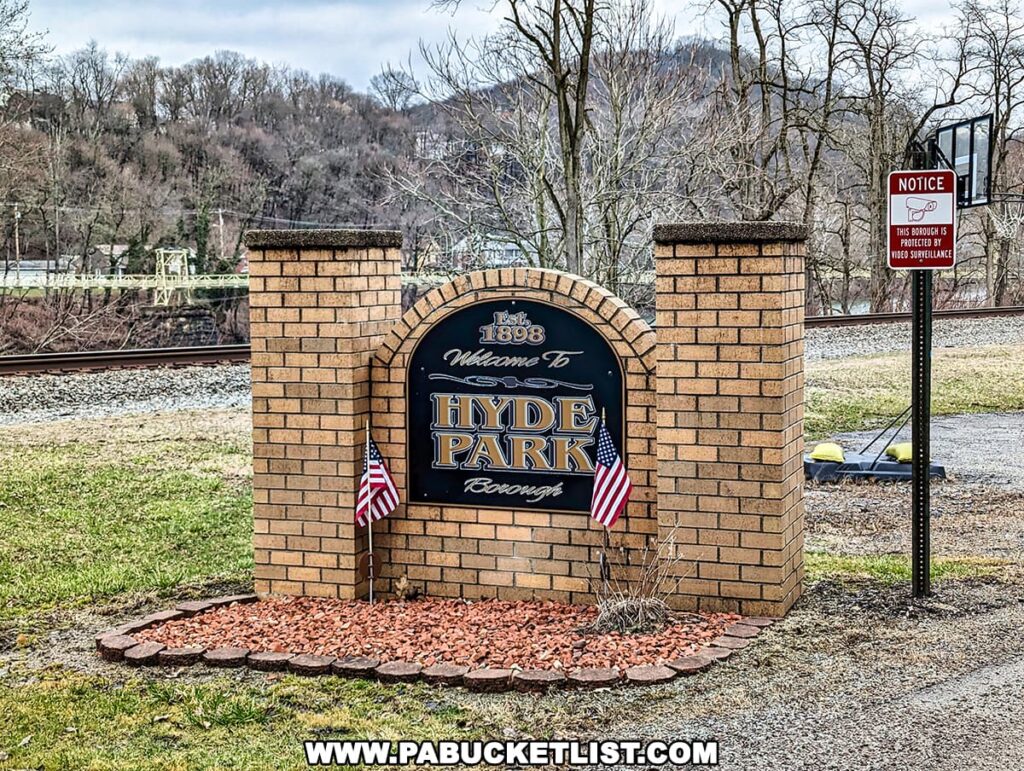
In 1920, a new suspension bridge was erected, utilizing the sturdy stone piers that had survived the flood.
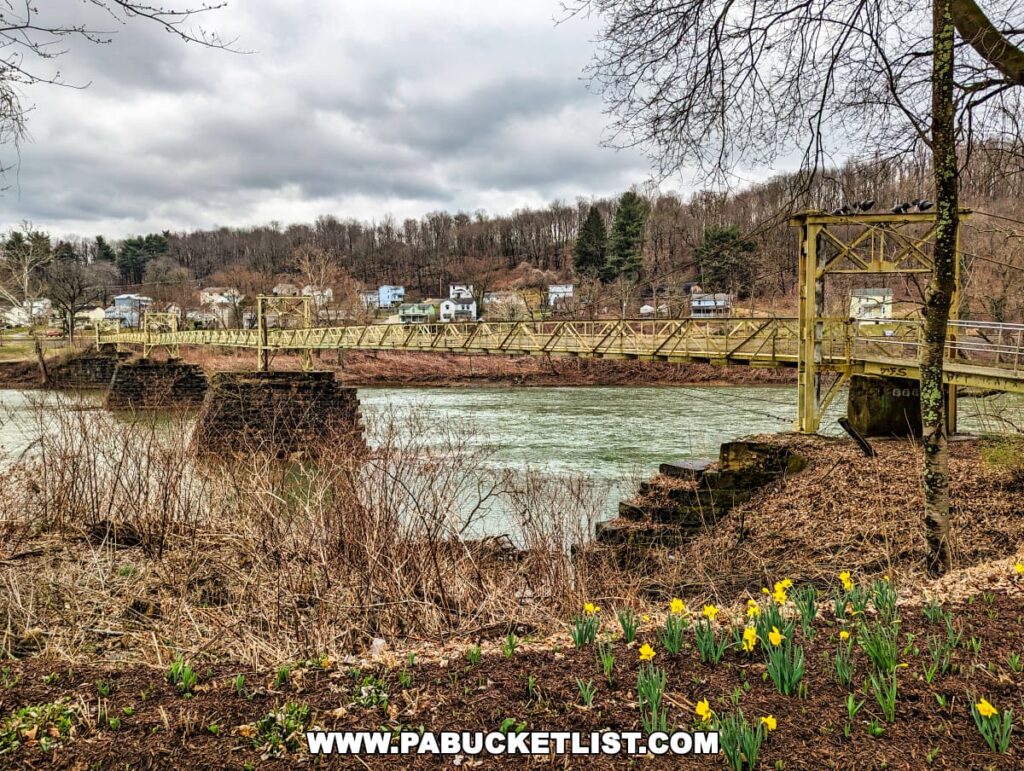
This new bridge, composed of steel cables and wooden planks (replaced by steel deck in 1950), was designed to withstand the forces of even the most powerful floods.
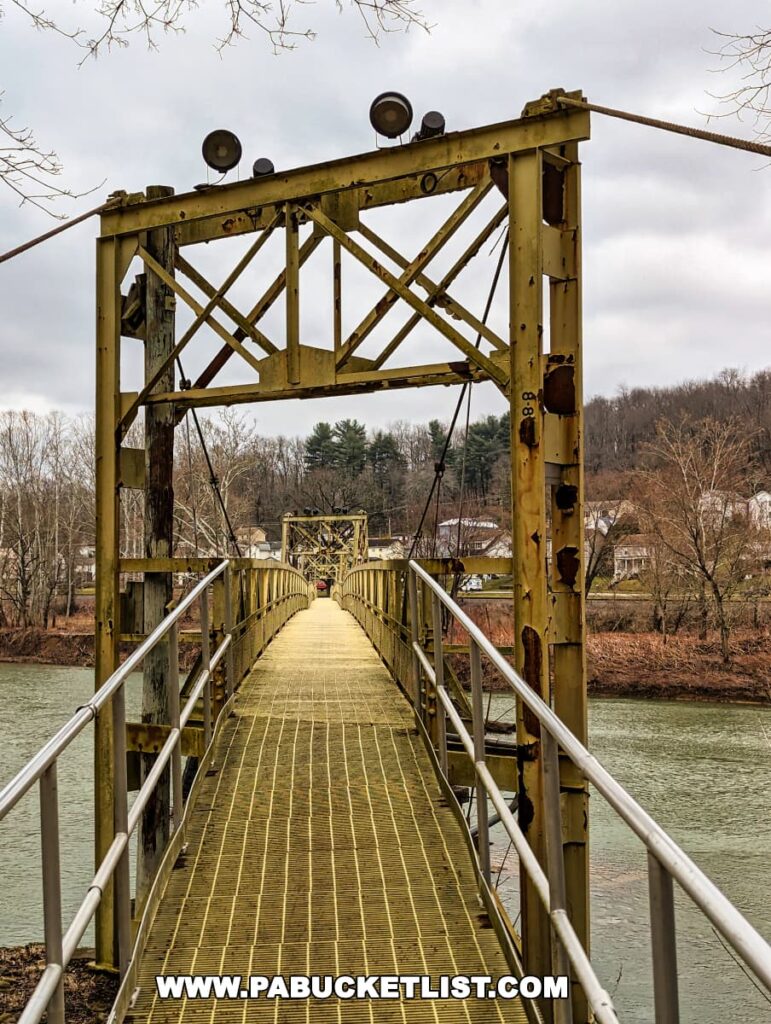
As visitors from near and far make their way across the bridge today, they become part of its rich history, adding their own stories and memories to the tapestry of this beloved landmark.
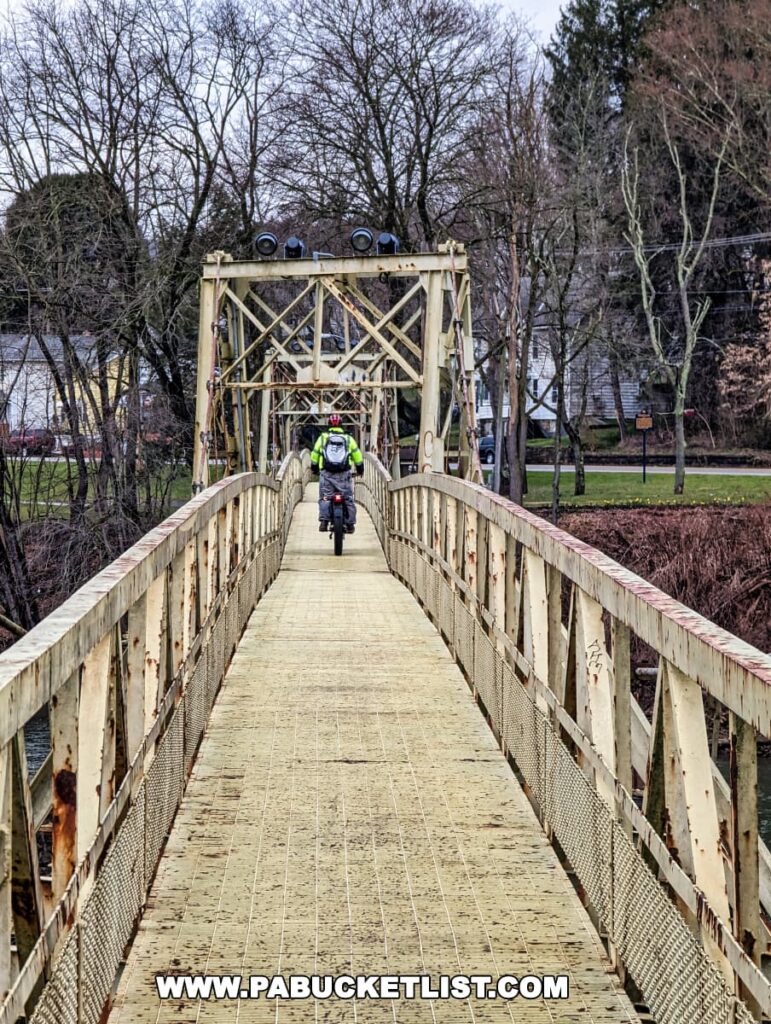
Because the bridge utilizes the solid stone piers and three spans, there is not a lot of “swinging” to this swinging bridge – I’d describe it more as a gentle bouncing sensation.
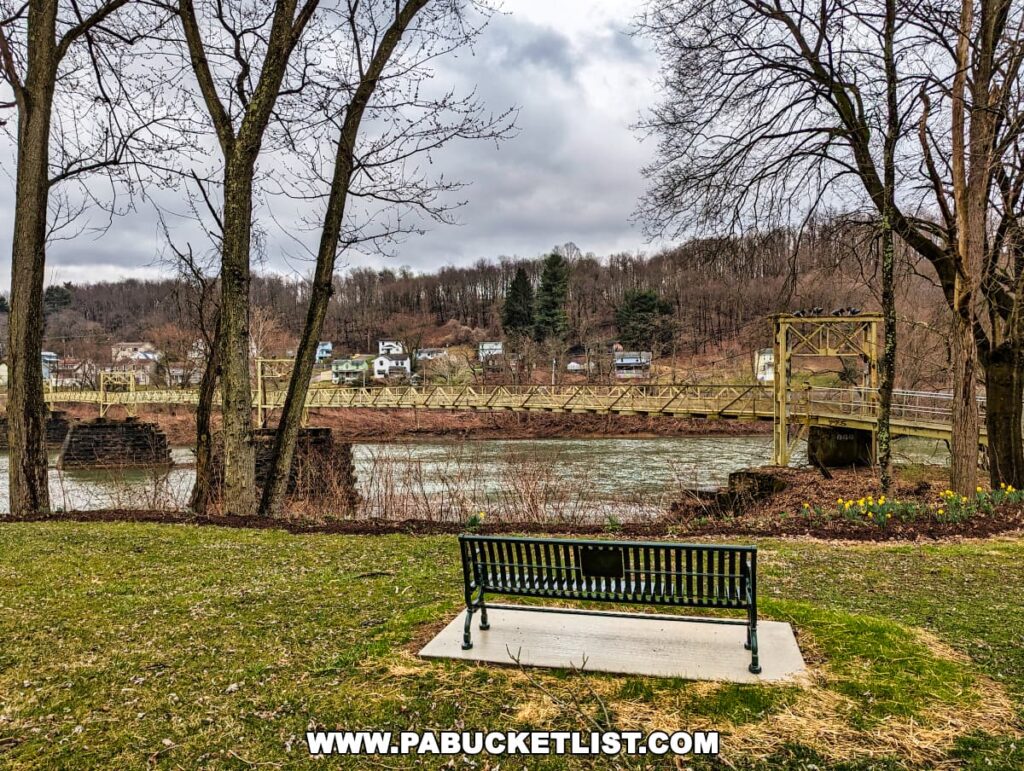
You MAY, however, have to deal with territorial Canadian geese, which depending on your disposition towards geese, could be even more frightening than crossing the bridge itself!
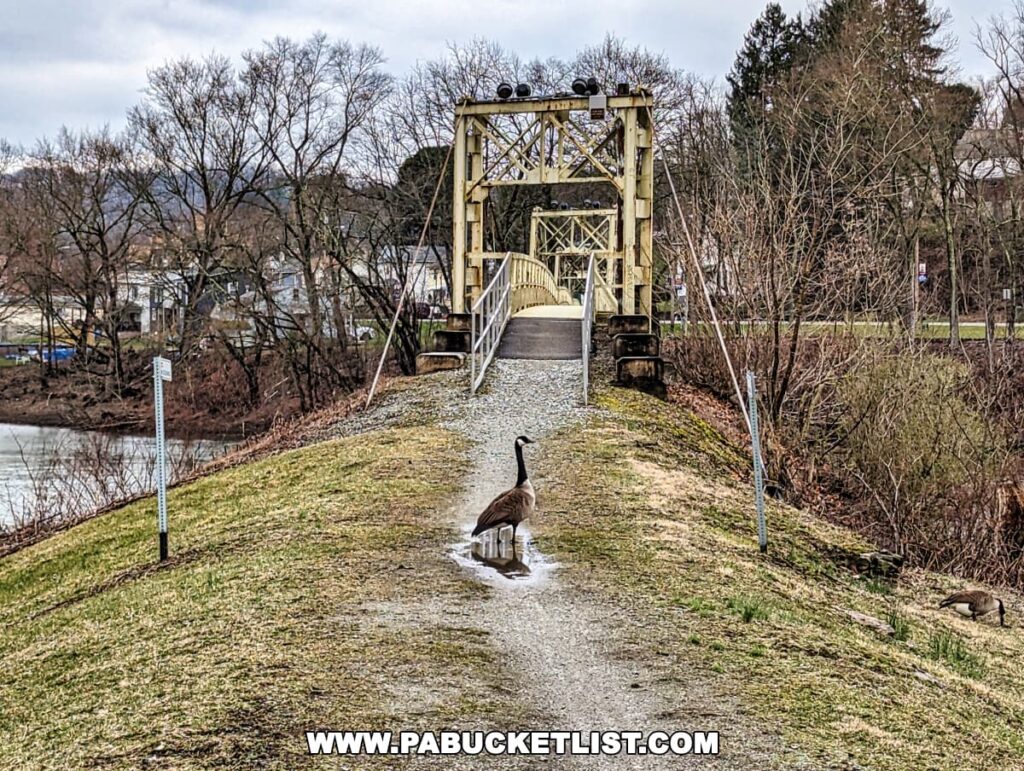
Known simply as “The Walking Bridge” by locals, this span has served as a vital link between Hyde Park and Leechburg for over a century, and is well worth a visit if you’re passing through this part of western PA.
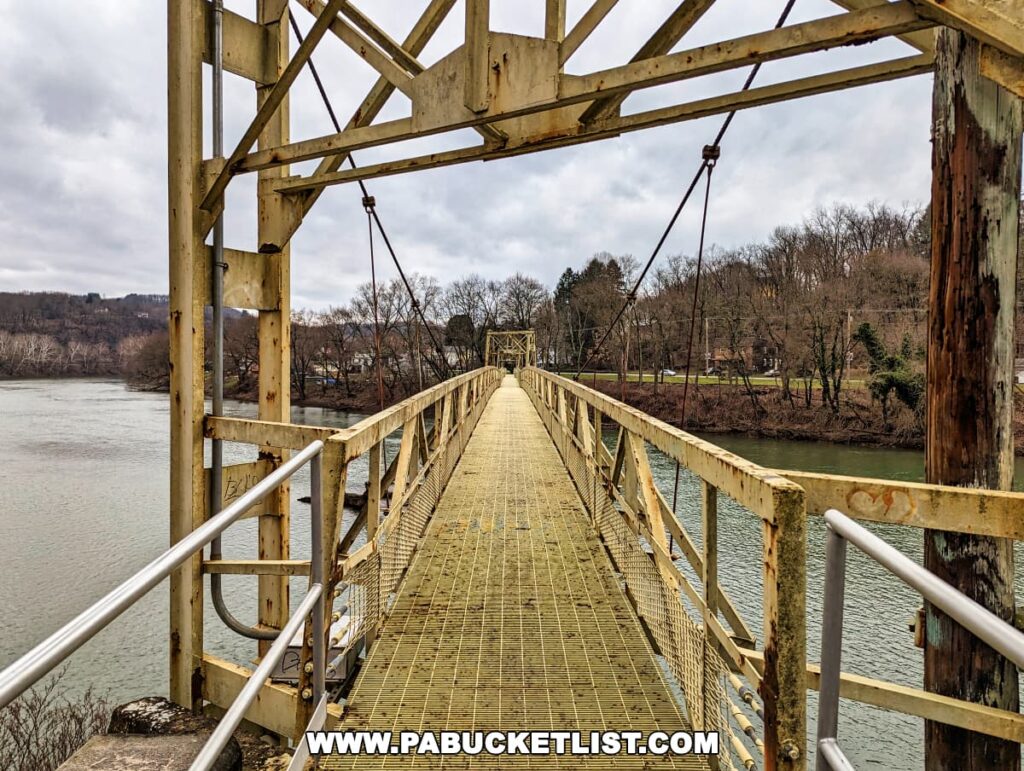
Related Attractions
Exploring the Best Swinging Bridges in Pennsylvania is your guide to even more great pedestrian suspension bridges across the state.
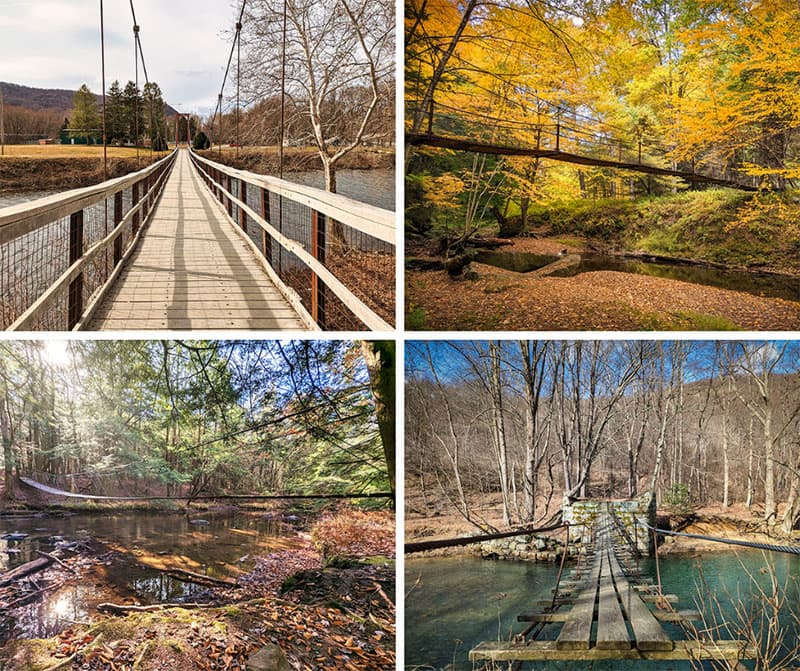
Nearby Attractions
Yellow Dog Village is a former mining company town dating back to the early 1900s that now serves as a time capsule and ghost town attraction in Armstrong County.
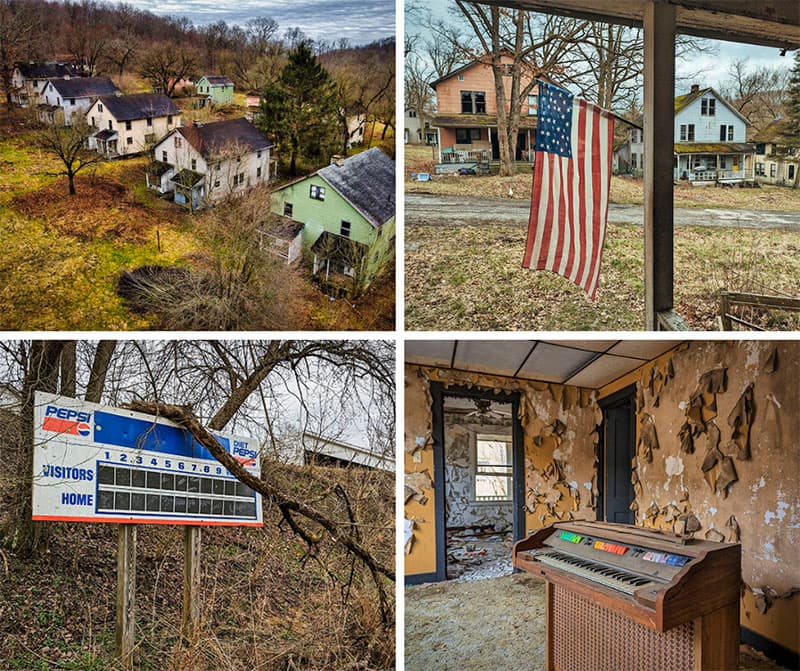
Buttermilk Falls in Armstrong County is short in stature but long on beauty, located along a rail trail that parallels Cowanshannock Creek, a tributary of the Allegheny River.
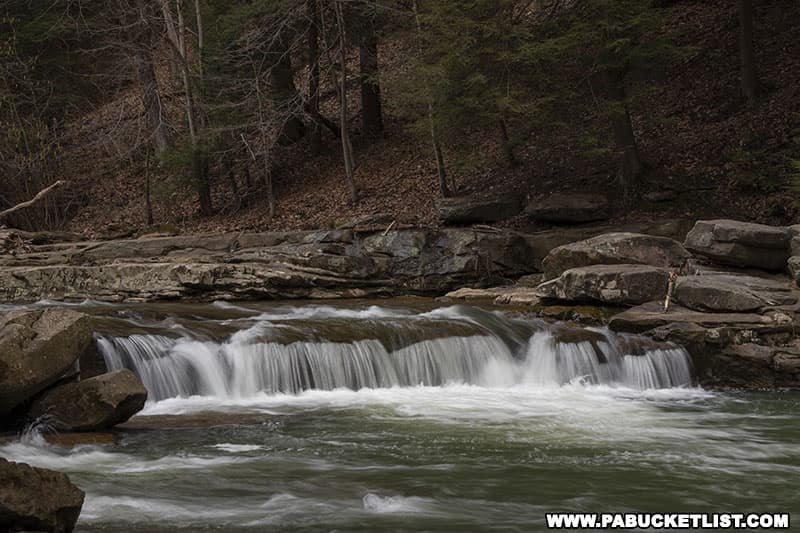
Did you enjoy this article?
If so, be sure to like and follow PA Bucket List on Facebook, Instagram, and/or Pinterest to learn more about the best things to see and do in Pennsylvania!
Click on any of the icons below to get connected to PA Bucket List on social media.


